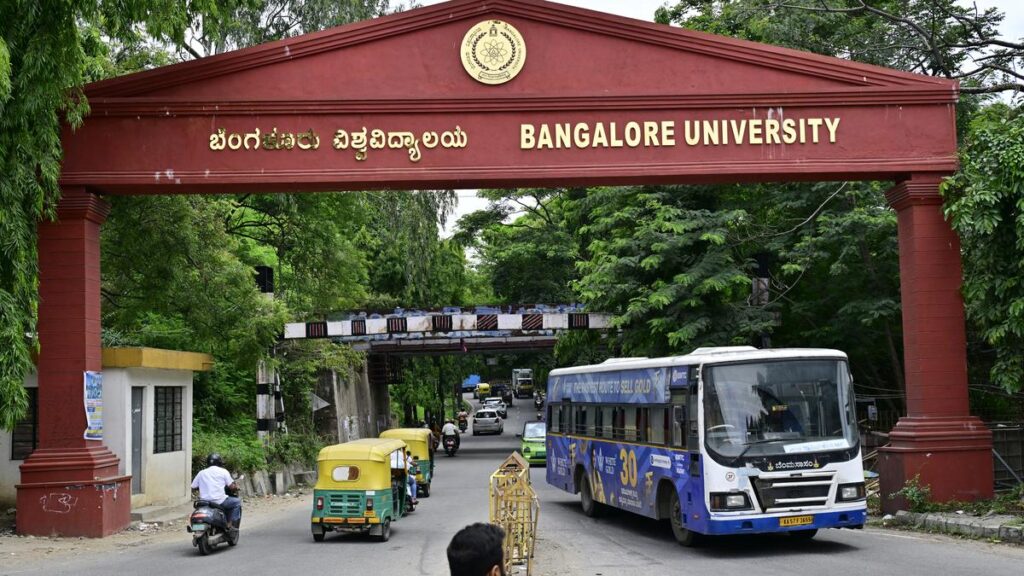
A file image of the Jnanabharathi campus of Bangalore University.
| Photo Credit: MURALI KUMAR K
The Bangalore University’s BCA department has implemented geotagged photographs of examiners at the beginning and end of each of the practical exams to ensure transparency and accountability.
It is for the first time that such a measure is being taken in a State-run-university. Sharing the details, Muralidhara B.L., co-ordinator for BCA said, “The BCA Practical Allotment has been fully computerised. Additionally, in a first for any university in Karnataka, we have implemented the collection of geotagged photographs of examiners at the beginning and end of each practical examination, thereby ensuring transparency and accountability.”
A Herculean task eased
Interestingly, Muralidhara himself developed the software, with support from alumni of the BCA department. “Through this initiative, we have effectively eliminated manual intervention, significantly enhancing both the efficiency and integrity of the process. Conducting BCA practical examinations has always been a Herculean task, given the geographical spread and the high number of examinations,” he stated.
Further he explained that BCA colleges are spread across both rural and urban areas of Bengaluru districts, including regions such as Dabaspet, Nelamangala, Magadi, Ramanagara, Channapatna, Bidadi, Kanakapura, Jigani, Bannerghatta, Chandapura, HSR Layout, Hebbal, and Nagasandra. Each semester, at least nine practical exams must be conducted per college, across 128 affiliated colleges, serving approximately 15,500 BCA students.
Data-driven, algorithmic approach
“To address logistical challenges, we adopted a data-driven and algorithmic approach. We used the K-means clustering algorithm to group colleges into 26 zones. A common practical timetable was prepared for all colleges. Teacher specialisations were collected through an online form to facilitate optimal examiner allocation. Student strength data for each subject was gathered from each college through an online portal,” Mr. Muralidhara said.
“Using the K-Nearest Neighbour (KNN) algorithm, we were able to automatically allocate external examiners to each center and date with a single click. Due to a shortage of specialised teachers, colleges with fewer than 14 students were tagged to nearby colleges for combined examinations. To ensure accountability and address previous complaints regarding late arrivals or premature completions by examiners, we mandated the upload of geotagged photographs at the start and end of each practical examination,” he added.
Published – June 29, 2025 06:01 pm IST


